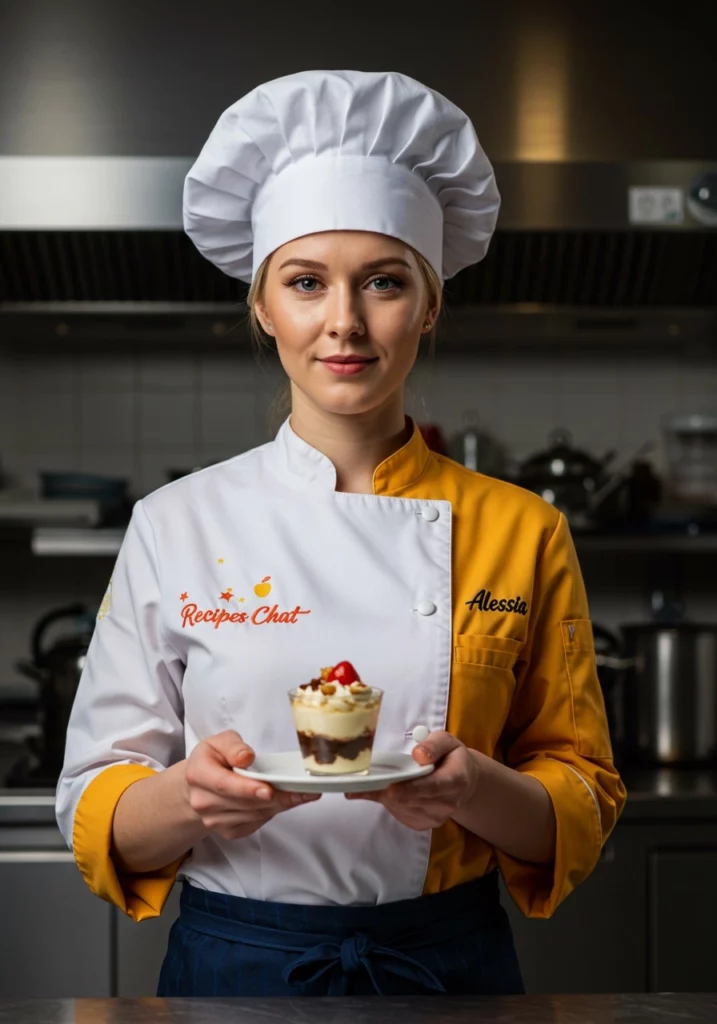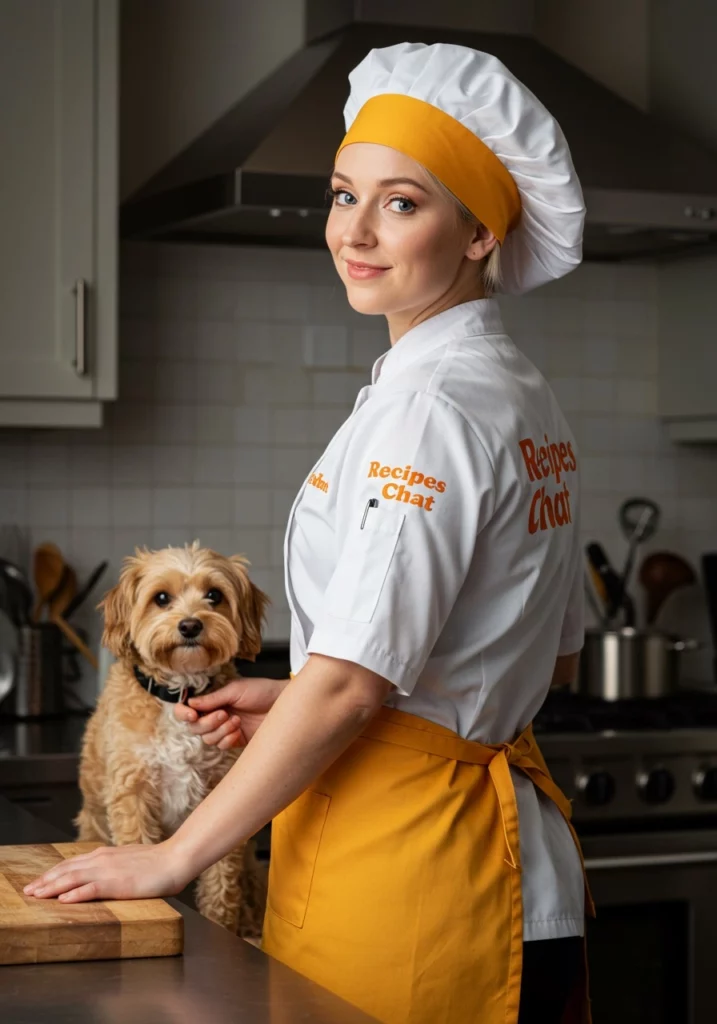There are few desserts that capture the heart of Canadian baking quite like the butter tart. But let’s be honest, making individual tarts can be a fiddly, time-consuming affair. That’s where the glorious, life-changing Butter Tart Square comes in. This recipe is my go-to for delivering all the nostalgic, gooey, buttery-caramel goodness of the classic tart but in an easy-to-make, crowd-pleasing bar form. The magic lies in the perfect contrast of textures: a sturdy, buttery shortbread crust that’s just firm enough to hold everything together, and a rich, sweet, slightly runny filling that sinks into your soul with every bite. These squares are the epitome of comfort baking. They fill your kitchen with the intoxicating aroma of brown sugar and butter, and they disappear from the dessert table in record time. Whether you’re a purist who loves the simple, unadulterated filling or someone who enjoys the chewy texture of raisins or the crunch of pecans, this recipe is your perfect canvas. Prepare to fall in love with the simplest, most decadent dessert bar you’ve ever made.
Ingredients
- For the Shortbread Crust:
- 2 cups all-purpose flour
- 1/2 cup packed light brown sugar
- 1/2 teaspoon salt
- 1 cup (2 sticks) cold unsalted butter, cut into 1/2-inch cubes
- For the Gooey Filling:
- 1 cup packed light brown sugar
- 1/2 cup light corn syrup (or pure maple syrup for a different flavor profile)
- 1/2 cup (1 stick) unsalted butter, melted
- 2 large eggs, lightly beaten
- 2 teaspoons pure vanilla extract
- 2 tablespoons all-purpose flour
- 1/4 teaspoon salt
- 1 cup chopped pecans or raisins (optional, but highly recommended)
Instructions
- Preheat and Prepare: First things first, get your oven ready. Preheat it to 350°F (175°C). Take a 9×13-inch baking pan and lightly grease it with butter or a non-stick cooking spray. For extra-easy removal and cleanup, I highly recommend lining the pan with parchment paper, leaving a bit of overhang on the two long sides. This creates “handles” that you can use to lift the entire slab of squares out of the pan once it’s cooled. Set the prepared pan aside.
- Make the Crust Mixture: In a medium-sized mixing bowl, combine the crust ingredients. Add the 2 cups of all-purpose flour, 1/2 cup of packed light brown sugar, and 1/2 teaspoon of salt. Whisk them together until they are evenly distributed. This ensures that every bite of the crust is perfectly seasoned.
- Cut in the Butter: Now, for the key to a tender, flaky shortbread crust. Add the cold, cubed butter to the dry ingredients. Using a pastry blender, two knives, or your fingertips, cut the butter into the flour mixture. Continue this process until the mixture resembles coarse crumbs with some pea-sized pieces of butter remaining. It’s important to work relatively quickly and keep the butter cold; this creates little pockets of steam as it bakes, resulting in a more tender crust. If you have a food processor, you can pulse the ingredients together until the desired texture is reached, which is a great time-saver.
- Press the Crust into the Pan: Transfer the crumbly mixture into your prepared 9×13-inch pan. Using your hands or the bottom of a flat measuring cup, press the crumbs down firmly and evenly across the bottom of the pan. You want a solid, compact base for your delicious filling. Make sure to get into the corners and create an even layer.
- Par-Bake the Crust: Place the pan in the preheated oven and bake for 15-20 minutes. You’re looking for the crust to be lightly golden around the edges and set. This step, known as par-baking, is crucial. It ensures the crust doesn’t become soggy from the wet filling and provides that perfect, slightly crisp texture. Once baked, remove it from the oven and place it on a wire rack, but leave the oven on.
- Prepare the Filling: While the crust is baking, you can prepare the gooey filling. This is where the magic happens. In a large mixing bowl, whisk together the 1 cup of packed light brown sugar and the 2 tablespoons of all-purpose flour. Breaking up any lumps of brown sugar and mixing it with the flour first helps prevent the filling from becoming grainy and aids in thickening.
- Combine Wet Ingredients: To the brown sugar mixture, add the 1/2 cup of melted butter, 1/2 cup of corn syrup, 2 lightly beaten eggs, 2 teaspoons of vanilla extract, and 1/4 teaspoon of salt. Whisk everything together until it’s smooth and well combined. The mixture should be glossy and uniform. Be careful not to over-whisk, as you don’t want to incorporate too much air; just mix until everything is homogenous.
- Add Your Mix-Ins (Optional): If you’re using them, gently fold in the 1 cup of chopped pecans or raisins. The pecans add a wonderful nutty crunch that contrasts beautifully with the soft filling, while raisins provide a classic chewy sweetness. You could also use walnuts, chocolate chips, or even shredded coconut. Distribute them evenly throughout the filling.
- Assemble and Bake Again: Once the filling is ready, retrieve your hot, par-baked crust. Pour the prepared filling evenly over the top of the crust, spreading it gently with a spatula to ensure it reaches all the corners. The heat from the crust will start the cooking process immediately.
- Final Bake: Carefully return the pan to the 350°F (175°C) oven. Bake for an additional 25-30 minutes. The sign of perfection is when the edges are set and appear slightly puffed and golden brown, while the center still has a slight jiggle to it when you gently shake the pan. This slight wobble is the secret to a gooey center. If you overbake it, the filling will become too firm and lose its signature texture.
- Cool Completely (The Hardest Part!): This is arguably the most important and most difficult step due to the temptation. Remove the pan from the oven and place it on a wire cooling rack. You must let the squares cool completely in the pan, which can take at least 2 hours at room temperature. Do not try to cut them while they are warm, or you will have a delicious, gooey mess. The filling needs this time to fully set. For even cleaner cuts, you can chill the cooled squares in the refrigerator for about 30-60 minutes before slicing.
- Slice and Serve: Once completely cooled, use the parchment paper overhangs to lift the entire block out of the pan and onto a cutting board. Use a large, sharp knife to cut into squares of your desired size. Wiping the knife clean with a damp cloth between cuts will help ensure perfectly neat edges. A 9×13 pan typically yields 24 modest squares or 16 more generous ones. Now, finally, you can enjoy the fruits of your labor!
Nutrition Facts
These Butter Tart Squares are a rich and decadent dessert, perfect for a special treat. While high in sugar and fat, they are made with simple, wholesome ingredients. Enjoy them in moderation as part of a balanced lifestyle. The nutritional information is an estimate and can vary based on exact ingredients and portion size.
- Servings: 24 squares
- Calories per serving: Approximately 210 kcal
- Fat: Approximately 12g
- Saturated Fat: Approximately 7g
- Carbohydrates: Approximately 25g
- Sugar: Approximately 18g
- Protein: Approximately 2g
- Sodium: Approximately 125mg
Preparation Time
This recipe is wonderfully efficient, with most of the time being hands-off baking and cooling. The active preparation is quick and straightforward, making it an excellent choice for bakers of all skill levels, even when you’re short on time. The hardest part is waiting for them to cool!
- Prep time: 20 minutes
- Cook time: 40-50 minutes (total baking time)
- Cooling time: 2 hours
- Total time: Approximately 3 hours 10 minutes
How to Serve
These versatile squares can be enjoyed in many ways, each one as delightful as the last. Here are a few of our favorite ways to serve them:
- Classic and Simple: Serve them at room temperature just as they are. Their flavor and texture are perfect on their own, making them an ideal grab-and-go treat.
- With a Hot Beverage: The sweet, caramel notes of the squares pair beautifully with a strong cup of black coffee or a simple black tea. The bitterness of the beverage cuts through the richness of the dessert perfectly.
- A La Mode: For an extra-decadent dessert experience, serve a slightly warmed square with a scoop of high-quality vanilla bean ice cream. The contrast of warm and cold is simply divine.
- With a Dollop of Cream: A spoonful of unsweetened or lightly sweetened whipped cream on top can balance the sweetness of the filling and add a lovely, light texture.
- Holiday Dessert Platter: Cut them into small, bite-sized squares (or even diamond shapes) and arrange them on a platter with other cookies and bars for holiday gatherings or parties. They are always a standout favorite.
- Dusted with Sugar: For a touch of elegance, lightly dust the cooled and cut squares with a bit of powdered sugar just before serving.
Additional Tips
Mastering the perfect Butter Tart Square is easy with these five key tips. Follow them to ensure gooey, delicious results every single time.
- 1. Do Not Overbake the Filling: The number one rule for achieving that signature gooey center is to pull the pan from the oven while the middle is still slightly jiggly. It will continue to cook and set as it cools on the wire rack. If you bake it until it’s completely firm, the filling will be more solid and cake-like, losing its luscious, molten quality.
- 2. Use Truly Cold Butter for the Crust: The temperature of your butter is non-negotiable for the shortbread base. Using butter straight from the refrigerator, cut into small cubes, creates a tender, flaky texture rather than a greasy or tough one. If your kitchen is warm, you can even pop the cubed butter in the freezer for 10 minutes before using it.
- 3. Patience is a Virtue (Especially for Cutting): We can’t stress this enough: let the squares cool completely before you even think about slicing them. Trying to cut them while warm will result in the filling oozing out and a messy presentation. For the cleanest, most professional-looking squares, chill the fully cooled slab in the fridge for at least 30 minutes before cutting with a long, sharp knife.
- 4. Customize Your Mix-Ins: This recipe is a fantastic base for your creativity. While pecans and raisins are classic, feel free to experiment. Try using chopped walnuts, semi-sweet chocolate chips, butterscotch chips, or unsweetened shredded coconut. You can even do a half-and-half pan if your family has divided loyalties! Just keep the total volume of mix-ins to about 1 cup.
- 5. Proper Storage is Key: To keep your Butter Tart Squares fresh, store them in an airtight container. They will keep at room temperature for up to 3 days. If you prefer a firmer filling or live in a warm climate, you can store them in the refrigerator for up to a week. They also freeze exceptionally well for longer storage (see FAQ).
Budgeting the Recipe
One of the most wonderful aspects of this Butter Tart Squares recipe, beyond its incredible taste, is its cost-effectiveness. It relies on common pantry staples that are generally inexpensive and easy to find. Ingredients like all-purpose flour, brown sugar, eggs, and salt are cornerstones of a frugal baker’s kitchen. While unsalted butter can sometimes be a pricier ingredient, it frequently goes on sale, especially around baking holidays, providing a great opportunity to stock up.
Compared to purchasing artisanal butter tarts or squares from a bakery, which can cost several dollars per piece, making a full 9×13-inch pan at home offers substantial savings. A single batch yields 16 to 24 squares, bringing the cost per serving down to a mere fraction of the bakery price. The most variable cost will be your choice of mix-in. Raisins are typically very affordable, while nuts like pecans can be more of an investment. To save money here, consider buying nuts from the bulk section of your grocery store, where you can purchase the exact amount you need without paying for excess packaging. You can also watch for sales on baking nuts and store them in your freezer to maintain freshness.
Ultimately, this recipe is a perfect example of how simple, accessible ingredients can be transformed into a luxurious and impressive dessert without breaking the bank. It’s an economical choice for potlucks, bake sales, or simply treating your family to something special.
Frequently Asked Questions
Q: Why did my filling turn out runny even after cooling?
A: A runny filling is almost always due to one of two things: underbaking or inaccurate measurements. Ensure you bake the squares until the edges are set and the center has only a *slight* jiggle. If it’s still very liquidy or sloshing, it needs more time in the oven. Also, double-check your ingredient measurements. Using too little flour in the filling or too few eggs can prevent it from setting up properly. Using large eggs as specified is important, as egg size can significantly impact the final texture.
Q: Can I use maple syrup instead of corn syrup?
A: Absolutely! Using pure maple syrup is a delicious substitution. It will give the squares a distinct and wonderful maple flavor that is very characteristic of many Canadian butter tart recipes. The texture will be very similar. Just be sure to use real maple syrup, not pancake syrup, which is mostly corn syrup and artificial flavorings and won’t produce the same rich taste.
Q: How can I make these butter tart squares gluten-free?
A: Yes, this recipe adapts well to being gluten-free. For the shortbread crust, you can substitute the all-purpose flour with a good quality 1-to-1 gluten-free baking flour blend (one that contains xanthan gum). The filling is naturally low in gluten; simply swap the 2 tablespoons of all-purpose flour in the filling with the same amount of your gluten-free blend or 1 tablespoon of cornstarch to act as a thickener. The baking time and method remain the same.
Q: I’m not sure if my squares are done. What are the exact visual cues?
A: Look for a combination of cues. The entire surface of the filling should look set, not wet. The edges, where the filling meets the crust, should be slightly puffed up and look golden brown. The very center (a circle about 2-3 inches in diameter) should still have a gentle wobble, like a Jell-O mold, when you nudge the pan. If the whole surface ripples like a liquid, it needs more time. If there’s no jiggle at all, it’s likely overbaked and will be firm rather than gooey.
Q: Can I freeze butter tart squares for later?
A: Yes, they freeze beautifully! This makes them a fantastic make-ahead dessert. First, let the squares cool completely and cut them into individual portions. You can then place the squares on a baking sheet in a single layer and “flash freeze” them for about an hour until they are solid. Once firm, transfer them to a freezer-safe zip-top bag or an airtight container, placing layers of parchment or wax paper between them to prevent sticking. They can be frozen for up to 3 months. To thaw, simply take out as many as you need and let them sit at room temperature for an hour or two.


